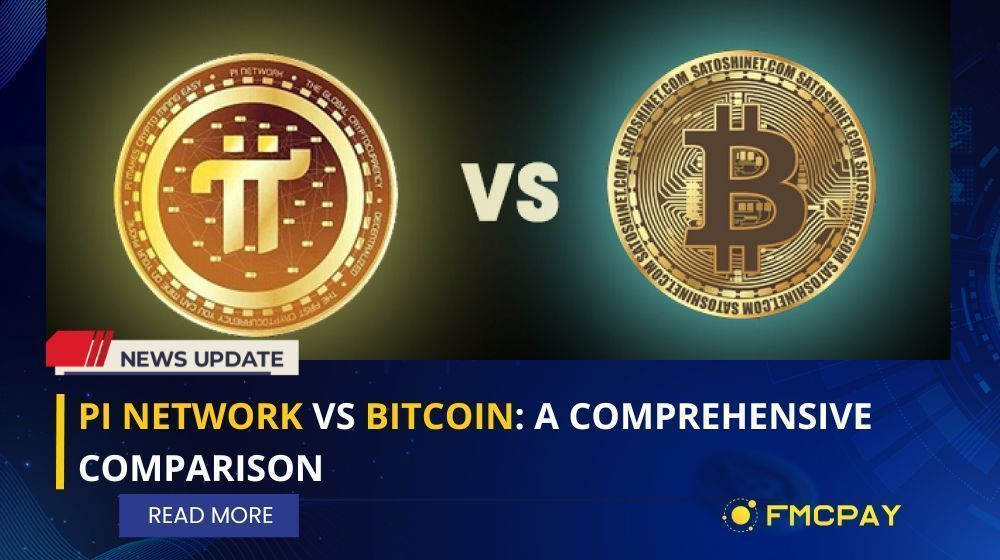Cryptocurrencies have revolutionized the financial landscape, introducing a decentralized and digital form of currency. Among the multitude of cryptocurrencies, Pi Network has emerged with a unique proposition. Pi, developed by a team of Stanford graduates, aims to make cryptocurrency mining accessible to the average person through their mobile devices. This article explores the value of Pi cryptocurrency, its current market status, and its potential future prospects.
Background Information
Pi Cryptocurrency, often referred to simply as “Pi,” is a digital currency that aims to democratize access to cryptocurrency by allowing users to mine coins using their mobile devices. It was created by a team of Stanford graduates, including Dr. Nicolas Kokkalis, Dr. Chengdiao Fan, and Vincent McPhillip. The project was launched in March 2019 with the vision of creating the world’s most inclusive peer-to-peer marketplace, fueled by Pi, the world’s most widely used cryptocurrency.
Pi is built on the principle of making cryptocurrency mining accessible to the average person. Unlike traditional cryptocurrencies such as Bitcoin, which require substantial computational power and energy consumption, Pi allows users to mine the currency through an app on their smartphones. This innovation is designed to level the playing field, enabling anyone with a mobile phone to participate in the cryptocurrency ecosystem.
How Pi Differs from Traditional Cryptocurrencies
Accessibility and Mining
One of the most significant differences between Pi and traditional cryptocurrencies is its accessibility. Traditional cryptocurrencies like Bitcoin and Ethereum require miners to use specialized hardware known as ASICs (Application-Specific Integrated Circuits) or high-performance GPUs (Graphics Processing Units). These mining processes are energy-intensive and expensive, creating a barrier to entry for many potential users.
In contrast, Pi utilizes a novel consensus algorithm based on the Stellar Consensus Protocol (SCP). This allows users to mine Pi directly from their mobile phones without draining battery power or significantly impacting device performance. The Pi Network app is user-friendly, requiring users to log in and activate mining sessions daily by pressing a button. This simple process ensures broad participation and fosters a large, engaged community.
Security and Decentralization
Pi aims to balance security and decentralization with user-friendliness. Traditional cryptocurrencies often achieve security and decentralization through proof-of-work (PoW) or proof-of-stake (PoS) mechanisms. These methods are robust but can be resource-intensive and complex for the average user.
The Pi Network employs a trust graph-based security approach. Users build their security circles, comprising trusted members who verify transactions within the network. This method leverages social connections to enhance security while maintaining decentralization. As the network grows, these interconnected security circles create a resilient and secure blockchain.
Additionally, Pi’s development team emphasizes the importance of gradual decentralization. During the initial phases, the network is somewhat centralized to facilitate development and improvements. However, the ultimate goal is to transition to a fully decentralized network as it matures and scales.
User Growth and Community Focus
Pi’s design is heavily focused on community growth and engagement. Traditional cryptocurrencies often rely on a smaller number of highly technical users to maintain and secure the network. Pi, however, aims to build a massive user base by lowering the barriers to entry and encouraging participation through a referral system. Users can increase their mining rate by inviting others to join the network, fostering rapid user growth and a sense of community.
The emphasis on community extends to governance as well. Pi Network’s founders envision a future where users have a say in the network’s development and decision-making processes, promoting a decentralized and democratic ecosystem.
Environmental Impact
Environmental concerns are a significant issue with traditional cryptocurrencies, particularly those using proof-of-work mechanisms like Bitcoin. These mining processes consume vast amounts of electricity, leading to substantial carbon footprints. Pi’s mobile-based mining is designed to be energy-efficient, addressing these environmental concerns. By enabling mining on standard smartphones without excessive power consumption, Pi aims to provide a more sustainable alternative in the cryptocurrency space.
In summary, Pi Cryptocurrency differentiates itself from traditional cryptocurrencies through its accessible mining process, security model based on trust circles, community-centric approach, and environmentally friendly practices. These features position Pi as a unique and promising player in the rapidly evolving world of digital currencies.
The Concept of Value in Cryptocurrencies
Understanding the value of cryptocurrencies involves more than just looking at their market prices. The concept of value in the context of cryptocurrencies encompasses various dimensions, including market value, intrinsic value, and factors influencing these values.
Defining Va#lue in the Context of Cryptocurrencies
Market Value
Market value is the most visible and commonly referenced measure of a cryptocurrency’s value. It is determined by the current price at which the cryptocurrency is traded on various exchanges multiplied by its total circulating supply. Market value fluctuates based on trading activity, influenced by investor sentiment, market trends, and broader economic factors. The market value of a define cryptocurrency is often quoted in terms of its market capitalization, which is calculated as:
Market Capitalization=Current Price×Circulating SupplyMarket Capitalization=Current Price×Circulating Supply
Intrinsic Value
Intrinsic value refers to the fundamental worth of a cryptocurrency, derived from its underlying technology, utility, and potential to solve real-world problems. Unlike market value, which can be highly volatile and influenced by speculative trading, intrinsic value is more stable and rooted in the cryptocurrency’s inherent characteristics. Factors contributing to intrinsic value include:
Technology: The robustness and innovation of the blockchain or underlying technology.
Utility: The practical applications and use cases of the cryptocurrency, such as facilitating transactions, enabling smart contracts, or powering decentralized applications (dApps).
Security: The strength of the cryptocurrency’s security mechanisms to prevent fraud and ensure trust.
Decentralization: The degree to which the network is decentralized, which impacts its resistance to censorship and control.
Factors Influencing the Value of Cryptocurrencies
Several factors can influence both the market and intrinsic value of cryptocurrencies:
Supply and Demand
Supply and demand dynamics play a crucial role in determining the value of cryptocurrencies. A limited supply coupled with high demand can drive up prices, while an excess supply with low demand can lead to a decrease in value. For instance, Bitcoin’s value is partly driven by its capped supply of 21 million coins, creating scarcity.
Utility and Use Cases
The real-world utility of a cryptocurrency significantly impacts its value. Cryptocurrencies with well-defined use cases and applications tend to have higher intrinsic value. For example, Ethereum’s value is largely derived from its ability to facilitate smart contracts and serve as a platform for decentralized applications.
Community and Network Effects
The size and engagement level of a cryptocurrency’s community can greatly influence its value. A large, active user base can drive adoption and increase demand. Network effects occur when the value of the network grows as more people use it. For example, Bitcoin and Ethereum benefit from strong network effects due to their large communities and widespread adoption.
Development and Innovation
Ongoing development and technological innovation are crucial for maintaining and enhancing a cryptocurrency’s value. Projects with active development teams and a clear roadmap for future improvements tend to be viewed more favorably. Continuous innovation can lead to new features, increased security, and expanded use cases.
Regulatory Environment
The regulatory landscape surrounding cryptocurrencies can significantly impact their value. Favorable regulations can promote adoption and investment, while stringent or unclear regulations can create uncertainty and hinder growth. Regulatory news and developments often cause immediate market reactions, reflecting their influence on perceived value.
Market Sentiment
Investor sentiment and market perception also play a critical role in determining a cryptocurrency’s market value. Positive news, endorsements by influential figures, or successful partnerships can boost confidence and drive up prices. Conversely, negative news, security breaches, or market crashes can lead to rapid declines in value.
Speculation
Speculative trading is a major factor in the cryptocurrency market. Many investors buy cryptocurrencies with the hope that their prices will rise, rather than based on their intrinsic value or utility. This speculative nature can lead to significant volatility and price swings.
The value of cryptocurrencies is multifaceted, encompassing both market value and intrinsic value. Various factors, including supply and demand, utility, community engagement, technological development, regulatory environment, market sentiment, and speculative trading, all contribute to shaping the value of a cryptocurrency. Understanding these factors provides a comprehensive view of what drives the value of cryptocurrencies and helps in assessing their potential as investments.
Current Value of Pi Cryptocurrency
Current Market Status
As of now, Pi cryptocurrency is not yet listed on major exchanges and is in its pre-release phase. Users can mine Pi and build their balances in anticipation of future trading opportunities. The true market value of Pi will be realized once it becomes tradable on exchanges.
Challenges and Criticisms
Despite its innovative approach, Pi faces several challenges:
Regulatory Issues: Navigating global regulatory environments can be complex and uncertain.
Technical and Operational Challenges: Ensuring the security and scalability of the network as it grows.
Potential Future Value of Pi Cryptocurrency
Roadmap and Development Plans
Pi Network has a clear roadmap focusing on developing a decentralized platform and launching the mainnet. Upcoming features include enhanced security protocols, decentralized applications (dApps), and strategic partnerships to expand its ecosystem.
Community Growth and Engagement
Pi’s value is strongly tied to its growing user base. The network’s marketing and awareness campaigns aim to expand its community, which is crucial for its adoption and success.
Market Predictions and Expert Opinions
Market analysts and experts have varied opinions on Pi’s future. Some are optimistic about its potential, given its unique approach and growing user base, while others remain cautious until it proves its utility and market acceptance.
Comparisons with Other Cryptocurrencies
 Pi vs. Bitcoin
Pi vs. Bitcoin
Pi differs from Bitcoin primarily in its mining process and accessibility. Bitcoin requires specialized hardware and significant energy consumption, whereas Pi can be mined on mobile phones with minimal resource use.
Pi vs. Ethereum
While Ethereum is known for its smart contract capabilities and vast developer support, Pi aims to create a more user-friendly and accessible cryptocurrency network. Pi’s future success will depend on its ability to develop similar utility and support.
Pi vs. Emerging Cryptocurrencies
Pi’s unique selling points include its accessibility and environmental sustainability. Comparing it with other emerging cryptocurrencies, Pi stands out by lowering the entry barrier for new users and focusing on mobile mining.
How to Participate in the Pi Network
Steps to Start Mining Pi
To start mining Pi, follow these steps:
Download the Pi Network App: Available on both iOS and Android platforms.
Complete Registration: Sign up using your phone number or Facebook account.
Start Mining: Press the mining button daily to earn Pi.
Tips for New Users
To maximize earnings, new users should:
Regularly Check In: Ensure daily mining sessions by tapping the mining button.
Invite Others: Grow your network to increase your mining rate.
Stay Secure: Use strong passwords and enable security features within the app.
The value of Pi cryptocurrency lies in its innovative approach to making digital currency accessible to everyone. While its current market value is yet to be established, the potential future value is promising, driven by its growing community and unique features. As Pi Network continues to develop and expand, it presents both opportunities and risks for users and investors.



